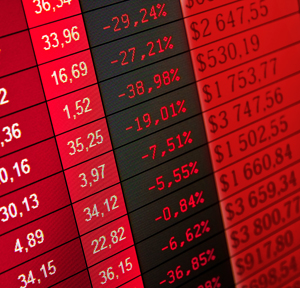Investment Strategies
Let's Face It, Chinese Equity Valuations Pre-Slump Were "Ridiculous", Says Matthews Asia

While investors may fret about market gyrations in China, a prominent specialist in the region calls for some perspective, and sees certain fears as overblown.
Many Chinese equities have been in “ridiculous” territory prior to the recent sharp selloff and this is a market heavily dominated by retail investors, who typically can be more skittish, but levels of leverage aren’t particularly concerning, a prominent asset management house specialising in Asia says.
“China’s equity markets have been in steady decline for several weeks, raising a lot of questions about the potential impact on the world’s second-largest economy. Given that China accounts for more global growth than the US, Europe and Japan combined, this is an important topic for investors,” Andy Rothman, investment strategist for Matthews Asia, said in a note late last week. The firm, headquartered in San Francisco, has about $31 billion of assets under management.
The slide in mainland China stocks has, along with the Greek debt crisis, caused concerns about wider contagion to the world economy.
Last Thursday, the Shanghai Stock Exchange Composite Index was 28 per cent from its 12 June peak although the benchmark is still up by 15 per cent year-to-date and is 82 per cent from a year ago.
“We can say that from a valuation perspective, many Chinese stocks have been in ridiculous territory. Commentators often focus on the ChiNext market, where 79 companies have a forward price-to-earnings (P/E) ratio of more than 100, and the median forward P/E is about 63. This is clearly very high,” Rothman continued.
“Commentators, however, often neglect to mention that everyone in China understands this is a very small, very speculative, tech-heavy market, with only 460 companies overall. Chinese who own those stocks know they are gambling, and very few foreigners play that game. The A-share market is much bigger (about 2,800 companies) and is much more broadly held. But it is also driven by retail investors, who account for 80 per cent of turnover,” he continued.
So far, he said, institutional investors play a minor role in the mainland stock market and foreign investors account for only about 3 per cent of holdings.
The mainland market is pricey – Rothman notes that it has a median forward p/e ratio of about 54 times. “If we cross the border into Hong Kong, where there is more institutional and foreign investment, the median forward p/e falls to only 14. This is the market (with about 1,800 Chinese companies) in which most foreign exposure to China takes place,” he said.
Margin trading
The question of what is called margin trading – leveraged
trading, in other words – has been highlighted by commentators as
a worry but while this is an issue, it is manageable, Rothman
said.
The margin balance outstanding is now about RMB1.8 trillion (around $285 billion), or 3.5 per cent of total market capitalisation. Regulations limit margin trading to those with at least RMB500,000 in their accounts; therefore the number of retail investors punting the market with borrowed funds is unlikely to be large, he said.
“Perhaps more importantly, it is worth noting that the majority of Chinese are not in the market. There are about 50 million active individual investors, which is equal to about 4 per cent of the total population or 7 per cent of the urban population. And most investors are punting a fairly small amount of money,” he added.